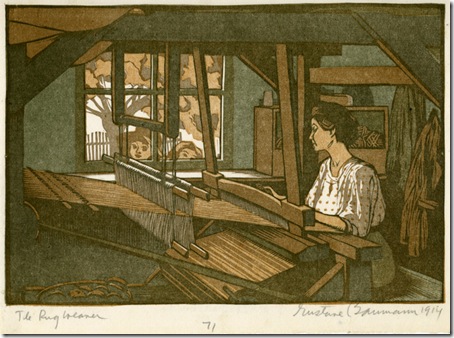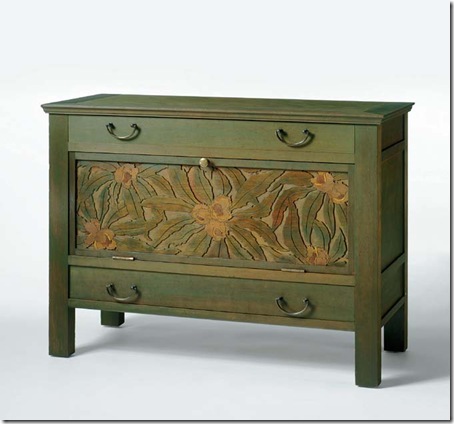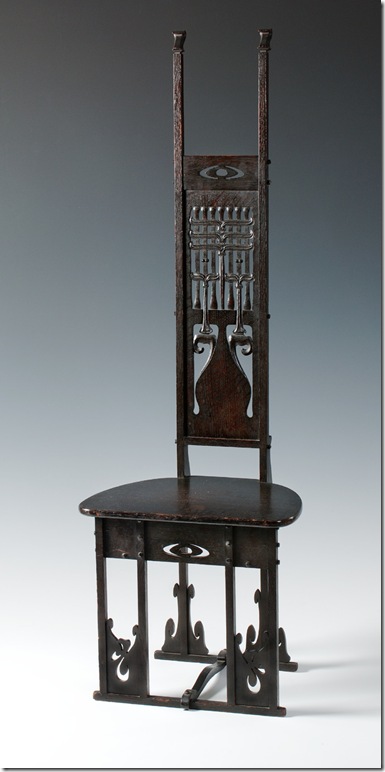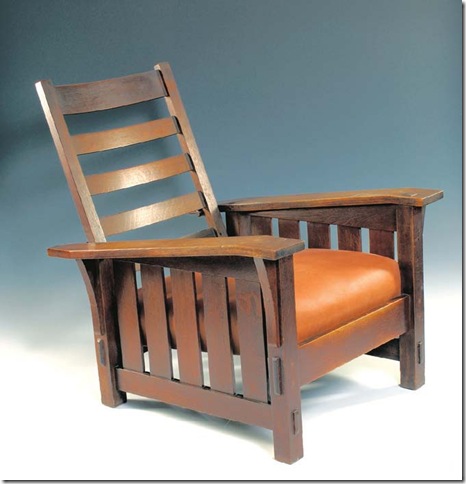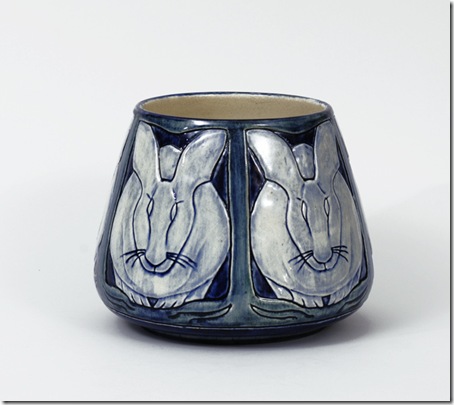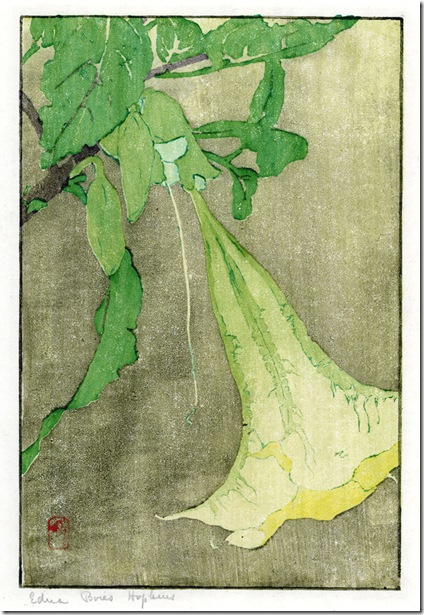In what better venue to showcase an exhibit of American Arts and Crafts creations, known for its simple lines, minimalist approach, no-frills, no-excess, back-to-nature aesthetic, than in Whitehall, a remnant from the Gilded Age and the Beaux-Arts style former home of Henry Flagler, the railroad magnate.
They are polar opposites and the contrast is striking. Whatever your taste, you will certainly leave with an appreciation, if not awareness, of the Arts and Crafts Movement and its desire to appeal to the egalitarian spirit and working class.
Opening today, the Flagler Museum’s exhibit, A Spirit of Simplicity: American Arts and Crafts from the Two Red Roses Foundation, is a comprehensive show of the best of the American Arts and Crafts Movement. Rudy Ciccarello, a Florida businessman, has endowed the Two Red Roses Foundation with one of the largest personal collections of Arts and Crafts objects in the United States.
The Arts and Crafts Movement began as a reaction to the Gilded Age and the industrialization that supported it. Proponents and artisans such as John Ruskin and William Morris preferred handcrafted objects to mass-produced ones. The movement began in Great Britain in the 1880s and took root in Europe before coming to America the following decade.
Their social ideologies were summed up by the democratic mottos of joy in labor, unity in design, and fidelity to place. Not simply a design movement, the Arts and Crafts Movement was a holistic one, incorporating a healthy and moral lifestyle, a back-to-nature philosophy and the idea that craftsmen should take pride and be fulfilled in their work.
This ideology is evident in the hand-constructed pieces of Gustav Stickley and Charles Rohlfs, whose furniture consciously leaves its handmade handprint visible as a mark of craftsmanship and where decoration and ornamentation are used in proscribed and restrained manners.
The Rohlfs pieces are, with their flourishes of escutcheon-like hinges and finials, comparatively more adorned than the Stickley pieces, which are detailed with functional, hand-hammered hardware.
The exhibit includes more than 150 representational objects, including furniture, pottery, and woodblock prints, from all of the big names associated with this movement including Stickley and Rohlfs.
To really appreciate the simplicty of the Arts and Crafts philosophy, wander into one of the adjoining rooms at the museum, and see the ornate Louis XIV- and XV-style furniture, or the floral-wallpaper bedrooms, and the decadent appurtenances of the Gilded Age. The simplicity, solid construction, austere lines and minimal decoration of Stickley’s furniture are a breath of fresh air compared to the ornate bedrooms and living quarters of the mansion.
Stickley’s prototype oak Adirondack recliner, with its wide, leather bottom, slatted sides and curved slats to support the back, wide armrests that dip down to support the wrist, is a classic -– proof of the concept that less is more and form follows function.
The museum has remodeled its exhibit space, the former bedrooms of the servant’s quarters, into re-creations of a typical Arts and Crafts living room. The first room contains mostly objects by Stickley. There is an oak-and-copper sideboard, an oak plate rack and a stained-glass window in a repetitive, unadorned flower pattern in muted minimalist shades of tan, yellow, and white outlined in black cames. Does the window enhance the space and make its presence known or take a back seat to the heavy wooden furniture?
Above the large, sturdy oak dining table and four chairs, and handwoven geometric rug, is a wrought-iron, copper and glass electrolier, or chandelier.
Another room is devoted to award-winning pottery from William H. Grueby and the highly collectible and quintessential American Rookwood pottery. Rookwood pottery, characterized by its palette of yellow, oranges and browns, became the most nationally and internationally recognized American pottery.
The modern, minimalist furniture and pottery, although not to my color taste, in muted moss-greens and earth tones, are easy to live with and easy to relate to. Grueby’s use of layers of soft-colored, mat glazes in browns and greens, complement the simple shapes and conventionalized designs.
The museum has gone as far as to paint the walls of the exhibit in this so-called soothing green, known as Grueby Green, perhaps for some reminiscent of elementary school classrooms and hospital wards.
Of particular interest, and one of the most stunning pieces in the collection, is a rare, important, oversized piece of Rookwood pottery, with an atypical black glazed background that takes its inspiration from Japanese art.
The Japanese inspiration and economy of means is evident in many of the woodblock prints by Arthur Wesley Dow and Edna Boies Hopkins, who was influenced as much by Monet as by the Far East, and whose Japanese-style flowers utilize delicate color transitions.
Not to be missed is Hopkins’ Datura, a strikingly lovely woodblock of the Datura flower in bloom, a lily-like flower that blooms upside down. The print is influenced by Japanese expressionism, the large hanging flower predominant in the foreground, set off by a background of intricate, complex green leaves and branches. The effect is pristine and restrained, yet elegant.
My sense and sensibilities lean more towards the feminine, so I may be biased towards the Japanese influence and inspiration, evident in the pottery and woodblocks, but the selection of furniture and woodcrafts is nothing if not masculine.
The Arts and Crafts movement set the tone for 20th-century design. Its legacy lives on and continues to modern days in the vibrant contemporary crafts movement evident in cities such as Portland, Asheville, San Francisco, and Pittsburgh. This show is the antecedent to today’s movement and is well worth seeing for the comprehensive glimpse it provides into an era and ideology.
A SPIRIT OF SIMPLICITY: AMERICAN ARTS AND CRAFTS FROM THE TWO RED ROSES FOUNDATION opens today and runs through January 3, 2010. The show is curated by Martin Eidelberg, professor emeritus at Rutgers University and Tracy Kamerer, chief curator at the Flagler Museum. Admission to the exhibition is free with museum admission: Adults, $18; youth ages 13-18, $10; children ages 6 to 12, $3; children under 6, free. Hours: Sunday, 12 p.m. to 5 p.m.; Tuesday through Saturday, 10 a.m. to 5 p.m. For more information, please visit www.flaglermuseum.us or call (561) 655-2833.
